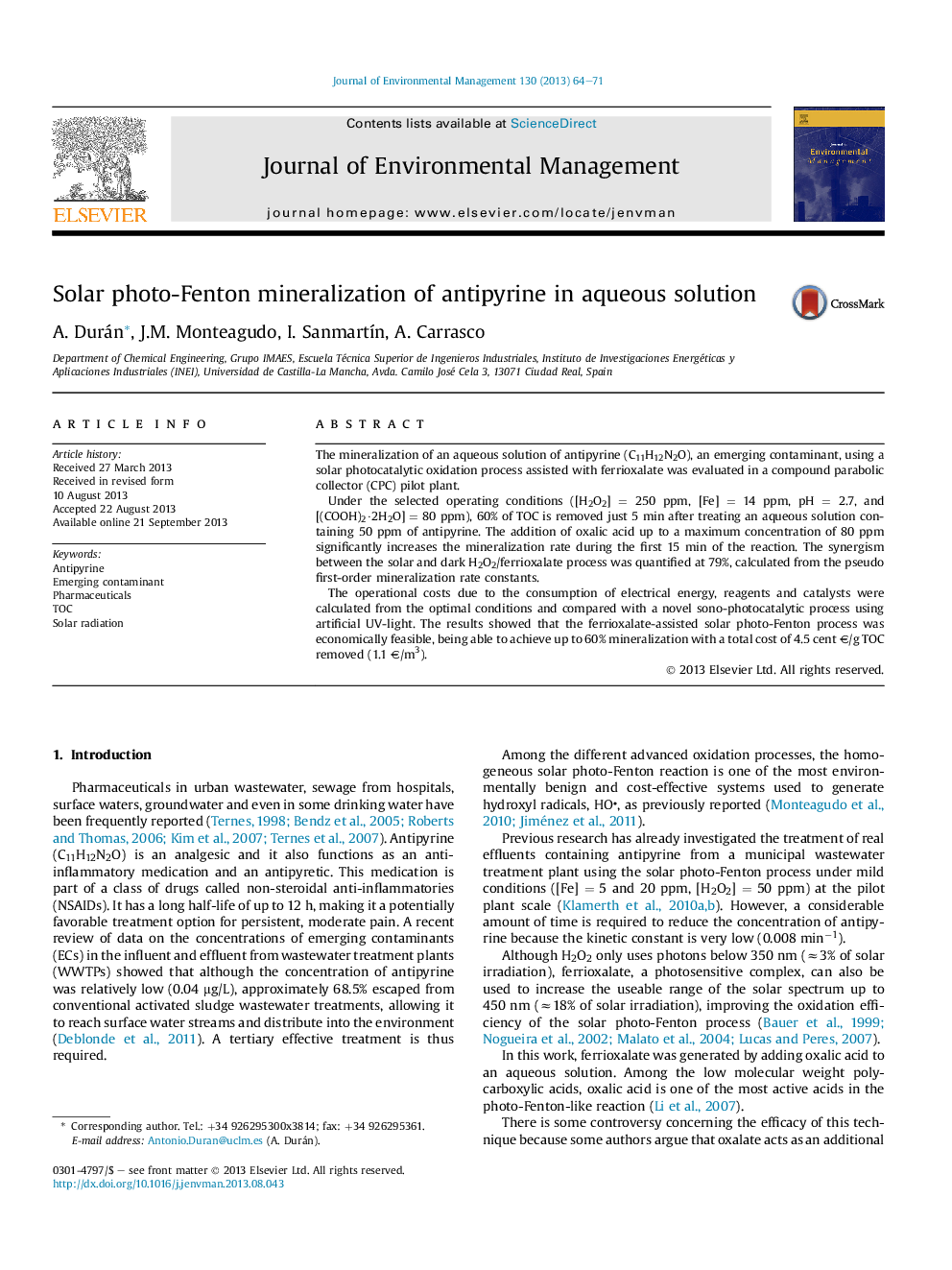| Article ID | Journal | Published Year | Pages | File Type |
|---|---|---|---|---|
| 1056072 | Journal of Environmental Management | 2013 | 8 Pages |
•The solar/H2O2/Ferrioxalate process is efficient for mineralizing antipyrine.•Under selected operating conditions, 60% of TOC is removed after 5 min.•Addition of oxalic acid increases TOC removal in the first minutes from 26 to 60%.•The synergism between the solar and the H2O2/Ferrioxalate process was 79%.•The operating cost in a solar CPC pilot plant is 4.5 cent €/g TOC removed (1.1 €/m3).
The mineralization of an aqueous solution of antipyrine (C11H12N2O), an emerging contaminant, using a solar photocatalytic oxidation process assisted with ferrioxalate was evaluated in a compound parabolic collector (CPC) pilot plant.Under the selected operating conditions ([H2O2] = 250 ppm, [Fe] = 14 ppm, pH = 2.7, and [(COOH)2·2H2O] = 80 ppm), 60% of TOC is removed just 5 min after treating an aqueous solution containing 50 ppm of antipyrine. The addition of oxalic acid up to a maximum concentration of 80 ppm significantly increases the mineralization rate during the first 15 min of the reaction. The synergism between the solar and dark H2O2/ferrioxalate process was quantified at 79%, calculated from the pseudo first-order mineralization rate constants.The operational costs due to the consumption of electrical energy, reagents and catalysts were calculated from the optimal conditions and compared with a novel sono-photocatalytic process using artificial UV-light. The results showed that the ferrioxalate-assisted solar photo-Fenton process was economically feasible, being able to achieve up to 60% mineralization with a total cost of 4.5 cent €/g TOC removed (1.1 €/m3).
